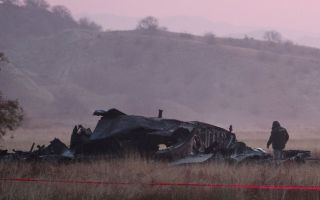
UK tests its response in major exercise simulating large-scale chemical and explosive incident

The UK's preparedness for a large-scale chemical, biological, radiological, nuclear and explosive (CBRNE) incident has been tested through a major national exercise.
The exercise, coordinated by Eastern Region Counter Terrorism Policing and the Ministry of Defence, involved up to 600 members of the Armed Forces, emergency services, and partner agencies.
The personnel responded to a complex, simulated CBRNE incident in Papworth, Cambridgeshire, which involved the release of harmful material and a number of improvised explosive devices to test joint working, emergency response and specialist response teams, including the Technical Response Force.
"Our outstanding British Armed Forces bring deep expertise, demonstrating their critical role in defending the homeland," Armed Forces Minister Al Carns said.
"Exercises like this show how the military is integral to keeping Britain safe and secure at home."
The use of CBRNE materials in an attack remains significantly less likely than a conventional attack; however, its malicious release remains a major threat to national security, according to the National Risk Register.
The type of incidents could include a terrorist using a chemical or biological weapon, an IED, a hazardous materials release, or a large-scale poisoning.
The last known CBRNE incident in the UK was the Novichok poisonings of Sergei and Yulia Skripal in Salisbury in March 2018. The former spy and his daughter survived.
"Joint training is vital to ensure that our policing partners, armed forces and emergency responders can work seamlessly together to protect the British public from a range of threats, including chemical, biological and radiological incidents," Security Minister Dan Jarvis said.
"Their ongoing training and preparation ensures that when an incident happens, the UK can respond rapidly, effectively and with confidence."
The Ministry of Defence and Counter Terrorism Policing run an annual CBRNE exercise to test this coordination in practice.
The exercise brings together Render Safe, which refers to the specialist capability to neutralise and make CBRNE devices, alongside emergency services, and other multi-agency partners, to strengthen readiness and interoperability.
The Ministry of Defence was approached for comment but has not responded.









